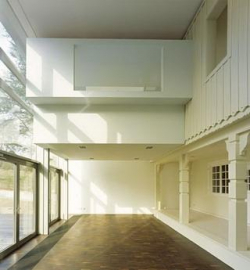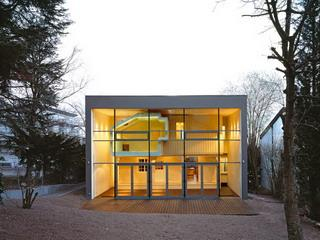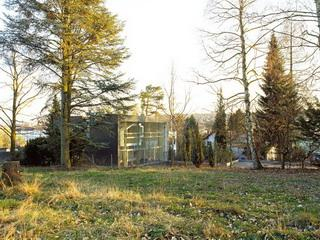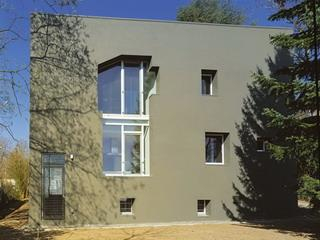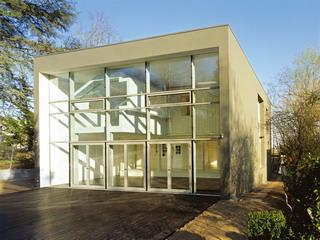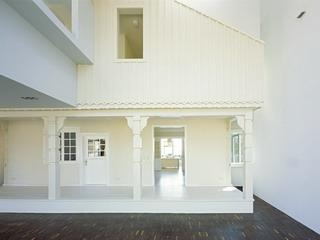Residence Wohlfahrt-Laymann
The Wohlfahrt-Laymann dwelling is situated in a heterogeneous residential area in the Taunus hills area outside Frankfurt am Main a high property value neighbourhood.
The house which was already present on the site was built in the 1930s and the first idea was to replace this building with a larger house. However, after a detailed inspection of the site and the quality of this very picturesque, traditional simple country cottage, the idea was born to use this existing building as the initial point for further planning. The concept of a complex transformation of this archetypical house is developed out of the necessity for both extensions and the optimisation of the building physics.
In fact a new shell is built round this house thus a new interior and intermediate space is created which can be used as new room. The position of the shell and thus its individual distance at different points from the inner house is dictated by the functional requirements of the ground plan structure.
The inner house is opened or rather broken open where light or space are required for its interior these light or room extensions are projected onto the outer shell in the form of light connections or space connections and transferred to this as perforations.
Inner/ outer/ intermediate/ and un-rooms of manifold and sometimes curious kinds are generated. Complex and seemingly simple rooms alternate with each other. Paradoxes occur from inside and outside a seemingly normal reality becomes distorted. A simple, traditional cottage in the country which originated as a matter-of-course is dissolved, transformed and simultaneously fortified in the sense of a metamorphosis. There are analogies e.g. to the House Ur from Gregor Schneider (Biennale Venice 2003 - German Pavilion) and works by Gordon Matta-Clark.
The concept of the conversion becomes viable and sensible due to the fact that the proportions of the existing house can be coated with a shell construction of normal dimensions and because the existing structure of the inner house is used very efficiently - in particular the previously unused roof area can be extended very efficiently.
The form of the light and space connections and their perforated outlines on the facade, are derived from the existing openings of the inner house, the new necessary apertures or the superimposition of both old and new openings.
The colour concept distinguishes between the elements house space connections shell; intending a rather more abstract legibility of the transformation. The dark brown earth covering the garden is apparently continued in the equally dark brown flooring of the terrace and the parquet floor inside the house. They grey-green colouring of the outer shell integrates well into the colours of the surrounding woodlands.

